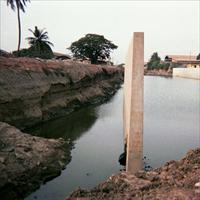SENEGAL: Coastal erosion research goes unfunded

Environmental officials are calling for funds to document the deterioration of Senegal’s coast and take action to save coastal communities.
“We need facts and figures about the sea to show people that [the threat of coastal erosion] is not just all talk,” said Sory Diallo, the director of Hydrometeorology and Maritime Meteorology in Senegal’s Ministry of Infrastructure.
The government in 2008 released a strategy to fight coastal erosion, which includes 22 projects.
As of February 2009 government officials are still seeking donor funding for 14 of the projects, including research, according to government reports.
Researcher Isabelle Niang, a professor at Cheikh Anta Diop University in the capital Dakar, told IRIN there is no money for studies to identify vulnerable areas or the extent of coastal damage.
“There is no research budget at the university; we have to pay for field trips ourselves and it is not easy,” said Niang. “If our scientists are asked for information, they cannot provide it because they cannot carry out the studies.”
She said she is worried the Senegalese government has been slow to look for such funding because it does not want to discourage investors from coastal areas, which are popular for tourism projects.
Disappearing act
But government officials told IRIN it is in their best interest to halt coastal damage. “The country’s economic and tourist centres and its main inhabited areas are all on the coast,” said Eliman Ba, a government adviser on coastal erosion. “If we find no solution to coastal erosion, a good part of our country will just disappear.”
Senegal’s Environment Ministry estimates that the sea is eroding the West African country’s Atlantic coastline by at least one metre per year on average, but said erosion is up to 10 times worse in vulnerable areas like the coastal town of Saint-Louis, 266km north of Dakar.
The UN Human Settlements Programme (UN-HABITAT) in 2008 named Saint-Louis as the African city most vulnerable to climate change damage due to its position between the Senegal River and Atlantic Ocean.
Saint-Louis resident Mokhtar Gaye lives on Langue de Barbarie, a sandy tourist strip dotted with hotels.
Every few days he puts up sand bags to protect his home from the advancing sea, Mokhtar told IRIN. "It is hard to work, to eat, even to sleep because you always think at the back of your mind that the sea can take everything away.”
Haïdar El Ali with the local environmental NGO l’Océanium said people hauling away sand to sell to construction companies has worsened erosion.
“People are taking literally thousands of tonnes of sand a day from the shore to use for building. They are…cutting down trees too,” said Ali.
Read about Benin’s similar challenge.
Poorly-planned and expanding coastal communities are another problem, said ministerial director Diallo. “People have built on low-lying land, where really they should not be. They have put themselves at risk.”
Solution?
Senegal President Abdoulaye Wade has proposed building sea walls to divert waves.
But Diallo said without funding researchers cannot conduct feasibility surveys.
The Environment Ministry plans to develop a law to police the use of land next to the sea, according to the ministry.
But university researcher Niang said she is concerned the law might not be enforced. “It would go against many government interests to do more to protect the environment.
“There is economic pressure to build on the coast, for hotels and the like. Is the government ready to think of the environment over the economy?”
Without more research on coastal erosion, people do not understand the danger it poses, said l’Océanium’s Ali. “We worry when it is too late. When we do get the figures showing how bad it is, the problem will have worsened.
“We need to worry now.”
 Back and Next - Back and Next
Back and Next - Back and Next See Also - See Also
See Also - See Also